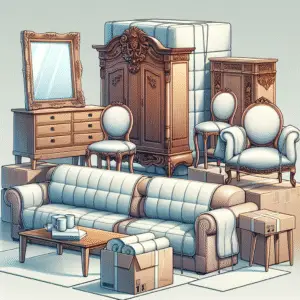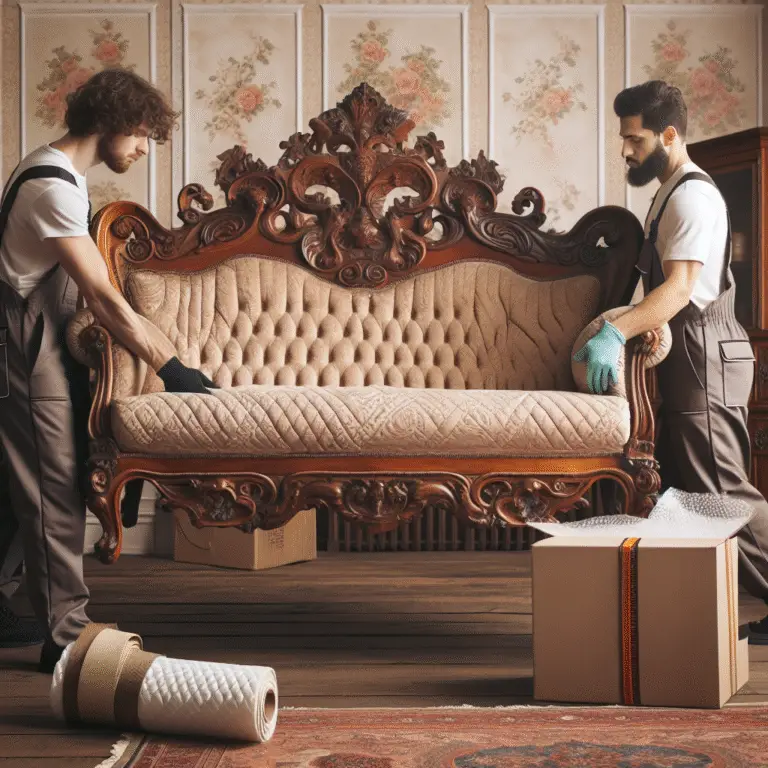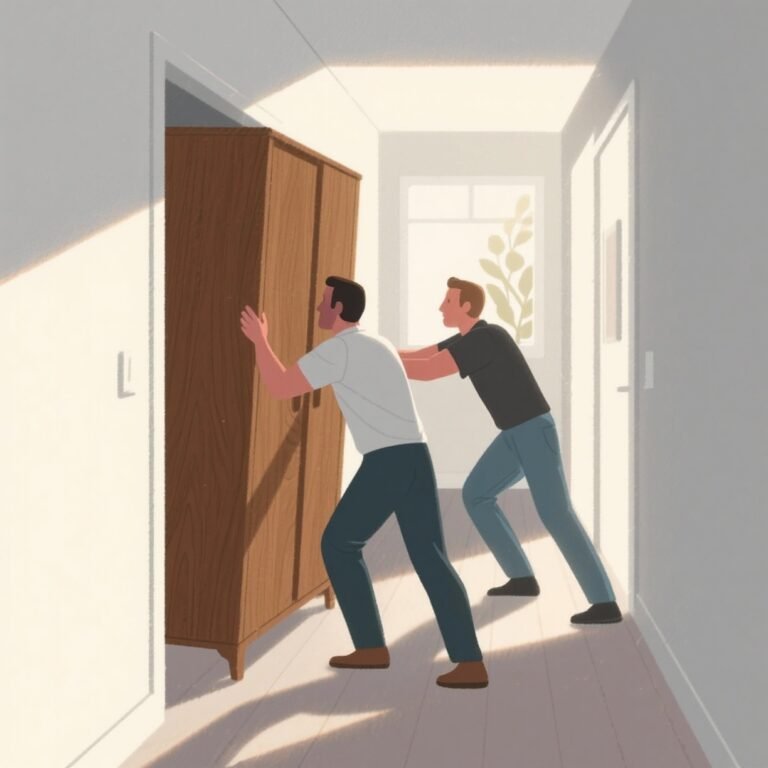Smart Solutions for Moving Furniture Through Narrow Doorways
You’ve measured once, even twice, and your couch still won’t fit. We’ve all stared in disbelief as a sofa refuses to squeeze through the front door or pivot down a tight hallway.
In 2025, moving furniture is more than just heaving and hoping – it’s a game of strategy, smarts, and the right tools.
Smart planning can make all the difference between a stress-free move and a scratched-up nightmare. Whether you’re relocating to a new space or redecorating your existing one, knowing how to maneuver bulky pieces without damaging your home or breaking your back is essential.
Let’s explore the clever tricks, modern gadgets, and time-tested techniques that can help you master the art of moving furniture through narrow doorways.
Assess Your Space and Furniture First
Before you lift a single item, it’s critical to measure everything. Start by noting the dimensions of your furniture — including width, height, and diagonal length. Pay special attention to oddly shaped items, as these can make or break a successful move.
Then move on to doorways, hallways, stairwells, and even ceiling heights if vertical movement is necessary. Don’t forget to identify any immovable obstacles like radiators or built-in fixtures. Using graph paper or a digital floor plan tool, sketch the moving path and pinpoint tight spots. This strategy helps you anticipate problems before they arise — a smart move that saves time and headaches.
Take It Apart: Disassembly Is a Game Changer
One of the simplest ways to breeze past a narrow doorway is to disassemble your furniture. Many large pieces, such as beds, dining tables, sectionals, and bookcases, are designed with breakdown in mind. Take a close look for hidden screws or latches that allow easy takedown.
Use appropriate tools like screwdrivers, Allen wrenches, or drill drivers for quick disassembly. Label each hardware component with masking tape or place them in individual ziplock bags to avoid losing crucial parts. For heirloom or complex pieces, calling a professional may be your best bet — they’ll ensure it’s done correctly and prevent damage.
Master Furniture Rotation Techniques
Sometimes, all you need is finesse. The “hook and turn” technique — where a furniture item is tilted into an L-shape and guided through the door — can make even the bulkiest sofa magically slide into place. Think in 3D: rotating diagonally or overhead can provide surprising clearance.
If space permits, try vertical lifts, especially for taller items. Sliders and lifting straps reduce friction and make it easier to maneuver with minimal brute force. Always move slowly and steadily — sudden jerks can scrape walls or crush fingers.
Equip Yourself with Protective Moving Tools
Professional movers swear by the right gear, and for good reason. Furniture sliders, especially those made of Teflon or felt, make it easy to glide items over hardwood floors or carpets. Dollies are perfect for heavier pieces – just make sure to secure the item with straps to avoid tipping.
Protect corners with foam covers and pad doorways with thick blankets. Lifting belts or forearm forklifts distribute weight evenly, minimizing back strain. Throw on a pair of gripping gloves and solid footwear to protect against accidental drops — safety should never take a back seat to speed.
Embrace Innovative Moving Aids in 2025
High-tech tools are changing the moving game. Inflatable moving pads and air sleds use air pressure to lift furniture slightly and glide it across the floor like butter. Compact hoists and stair rollers give you a safe way to move heavy pieces up or down narrow staircases.
Need help visualizing fit before lifting? Use smartphone AR tools like MagicPlan or RoomScan Pro to simulate furniture placement and assess potential bottlenecks. As moving expert Kevin O’Reilly from the American Moving and Storage Association says, “Technology has become an indispensable part of the modern relocation process — it saves time, reduces labor, and prevents damage.”
Renting these gadgets from local hardware stores or equipment rental services can be more budget-friendly than buying them outright, especially for one-time moves.
When in Doubt, Remove the Door
If there’s barely a centimeter to spare, removing the door or even part of the frame might be worth it. Most doors are attached to the frame with simple pin hinges. With a screwdriver and a tap from a hammer, you can lift the door easily and gain up to 2 inches of clearance.
For extremely tight fits, carefully dismantling part of the door frame may give you the extra edge. Just remember that you’ll need to restore and possibly repaint afterward. Avoid frame removal if the wall contains electrical wiring or is load-bearing — in such cases, always consult a professional.
Know When to Call the Pros
Sometimes, no matter how many tricks you try, the furniture simply won’t budge. That’s when professional movers earn their keep. Trained crews come equipped with the right tools, skills, and insurance, offering peace of mind when handling valuable or oversized pieces.
Look for companies that specialize in tight-space or urban moving. Get written estimates, verify insurance coverage, and ask about services like furniture hoisting or disassembly. Though prices can vary, the money spent is often worth the time and damage prevention.
Specialty movers are also essential for antiques and irreplaceable items. They’ll customize solutions using padding, climate control options, or even cranes for window-based entry.
Think Outside the Door
Door won’t work? No problem. Windows, balconies, garages, and even basements can offer alternative paths. As strange as it sounds, lowering or raising furniture with proper rigging from balconies is often safer than forcing it through the front door.
In long-term living situations with chronic tight access, think modular. Flat-pack options from brands like IKEA or Campaign are popular for good reason — easier to transport and surprisingly durable. Alternatively, for short-term stays or rentals, consider leasing furniture tailored to compact spaces.
After the Move: Protect Your Investment
Once everything’s inside, give it — and yourself — a well-deserved breather. Inspect each piece for nicks, scuffs, or lost parts. Touch up minor chips with scratch markers or wood filler.
Clean upholstery and reassemble carefully using your labeled components. Arrange furniture with airflow and functionality in mind, especially in tighter rooms. For future moves, consider lightweight or modular options to cut down on the hassle next time around.
The Smart Way Forward
Navigating narrow doorways isn’t about force — it’s about foresight. With tactics like disassembly, rotation techniques, smart tools, and thinking beyond the obvious, what once seemed impossible becomes manageable.
Proper preparation and the right gear will save time, protect your belongings, and prevent injuries. So before you wedge that armchair through your hallway again, stop, measure, plan, and move smartly.













